Tourists from all over the world are welcomed in Upper Egypt to admire temples and learn about the fascinating history of ancient pharaohs. However, the pharaohs’ true origins are not told and our literature is lacking adequate information.
Queen Hatshepsut’s temple inscriptions at Luxor reveal that her divine mother, Hathor, was from Punt – with strong indications that the pharaohs considered the origin of their culture to be Punt Land. The following is a step in the direction of exploring the pharaohs’ roots and establishing a trip along history and time.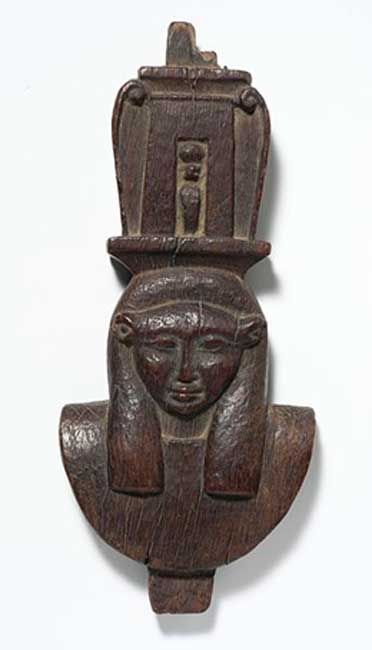
Carved cedar sculpture of the head of Hathor. (Egyptian 16th Dynasty) ( Public Domain)
The Land of the Gods
Punt Land is described in ancient Egyptian texts as the “Land of the Gods” and a region rich in resources. After Jean-Francois Champollion deciphered the pharaoh’s hieroglyphics in 1822 AD, western scholars began reading the texts. Debates started as to the origins of the pharaohs and the location of Punt Land.
Egypt grew as a nation with trade that increased in the latter part of the Pre-Dynastic Period (c. 6000-3150 BC). By the Early Dynastic Period (c. 3150-2613 BC) trade was firmly established with regions in Mesopotamia and Phoenicia. The Fifth Dynasty (c. 2498-2345 BC) witnessed Egypt’s flourishing through trade with Punt Land.
- Out for War or A Shopping Trip? Why Hatshepsut Traveled to the Kingdom of Punt
- Where Was the Mysterious Kingdom of Yam?
- The Mythical Land of Punt – Will ‘God’s Land’ Ever Be Found?
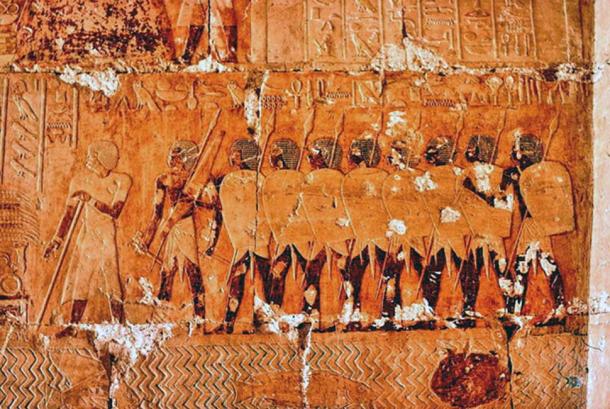
Egyptian expedition to Punt during the reign of Hatshepsut. (Hans Bernhard/ CC BY SA 3.0)
Fourth Dynasty reliefs show a Puntite with one of Khufu’s sons, and Fifth Dynasty documents demonstrate trade between the two countries. A tomb inscription of the military commander Pepynakht Heqalb, who served under King Pepy II (2278-2184 BC) of the Sixth Dynasty, narrates how Heqalb was sent to “the land of the Aamu” to retrieve the body of the warden of Kekhen.
Punt Land became a semi-mythical land for the pharaohs, but it was a real place through the New Kingdom (1570-1069 BC). During the reign of Amunhotep II (1425-1400 BC) delegations from Punt were accepted. The reign of Ramesses II (1279-1213 BC) and of Ramesses III (1186-1155 BC) mentioned Punt as well. The pharaohs were fascinated by Punt as a “land of plenty” and it was best known as Ta Netjer – “God’s Land.”
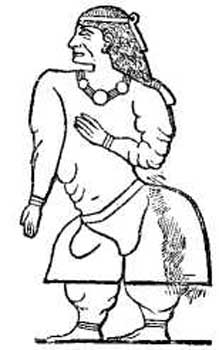
Queen Ati, wife of King Perahu of Punt, as she is depicted on Pharaoh Hatshepsut’s temple at Deir el-Bahri. ( Public Domain )
Somalia – Continuing Puntite Traditions
In Hatshepsut’s temple, an expedition shows Punt Land located in present day Somalia. The ancient Somali name for their region was “Bunn”, a name referenced in texts related to trade with the pharaohs as “Pwenet” or “Pwene”, and the region is known as “Bunni” today. The culture of Punt Land bears several resemblances to that of the ancient Egyptians, such as language, ceremonial dress, and the arts.
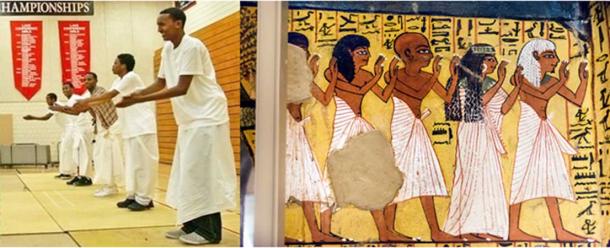
Left: Somali youth dancing the “dhaanto.” ( Somali Egyptian-Puntite History ) Right: Ancient Egyptians with similar white clothing in a fresco from the Tomb of Pashedu at Deir el-Medina. (kairoinfo4u/ CC BY NC SA 2.0 ) Pashedu was a “Servant in the Place of Truth on the West of Thebes” and probably began working while Seti I was pharaoh.
Regarding language, a comparison of ancient Egyptian to Somali vocabulary shows remarkable similarities:
- Ancient Egyptian, “Hes” = song, sing with musical instrument/ in Somali, “Hes” = song, sing with musical instrument.
- “AAR” means “lion” in both languages.
- Ancient Egyptian, “Ra” = the Sun God/ in Somali “Qor Rah” means the neck of Rah.
- Ancient Egyptian, Haa – Hey = glad, to be glad/ in Somali, Haa – Hey = glad.
- Ancient Egyptian, “Hun”, Hunnu” = young man, young girl/ in Somali “Hun”, “Hunno” = young man, young girl.
- Ancient Egyptian/ in Somali Awoow = grandfather, old man.
Left: Ancient Egyptian dancers and flutist. ( Public Domain ) Right: Young Somali women and men performing the traditional dhaanto dance-song in Jubaland. (aflaanta std/ CC BY 3.0 )
Punt Land’s Location Found
Based on the evidence of the ancient pharaoh’s inscriptions, Punt/Punt Land is certainly the State of Somalia at the Horn of Africa. The ancient city of Opone in Somalia is identical to the city of Pouen referenced as part of Punt by ancient inscriptions.
As previously mentioned, Hatshepsut’s inscriptions also claim that her divine mother was from Punt – and there is evidence that Bes (the goddess of childbirth) came from Punt Land as well. Other inscriptions indicate that the 18th Dynasty pharaohs considered Punt as the origin of their culture.
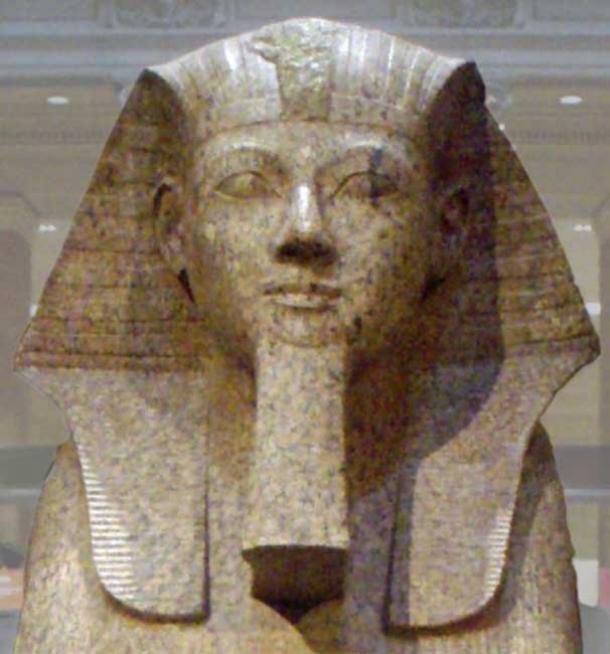
A large granite sphinx bearing the likeness of the female Pharaoh Hatshepsut. Dating to the joint reign of Hatshepsut and Thutmose III, circa 1479-1458 BC. (Keith Schengili-Roberts/ CC BY SA 2.5 )
Hatshepsut’s Punt Expedition
The Land of Punt was long associated with the Gods in ancient Egyptian history because materials from Punt were also used in their temple rituals. Priests wore leopard skins, gold became statuary, and incense was burned in the temples.
Hatshepsut’s reign was among the most prosperous in Egyptian history. She considered her expedition to Punt Land among her greatest successes. The importance of Punt to the queen is evident at her temple; where scenes from Hatshepsut’s life decorate the walls of the colonnades; her birth, the transportation of obelisks for the Temple of Amun in Thebes, and the great expedition to Punt are all depicted.
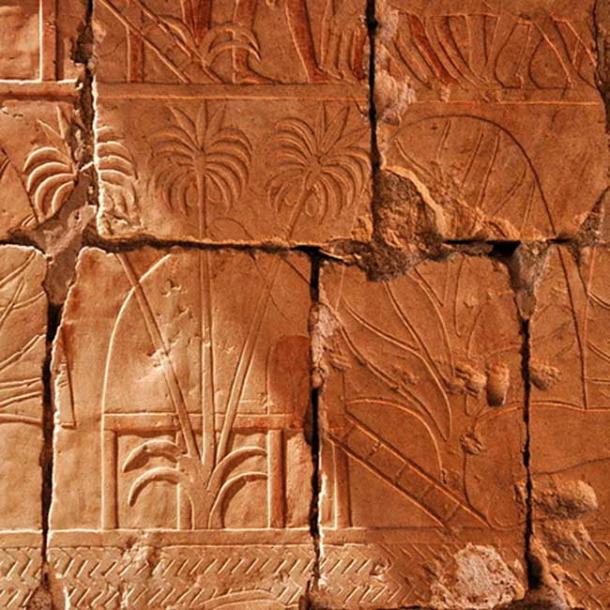
A relief depicting incense and myrrh trees obtained in Hatshepsut’s expedition to Punt. (Hans Bernhard/ CC BY SA 3.0)
Hatshepsut’s Punt Expedition had special significance, simply because it was larger than any other, and evidence suggests that it was directed by the Gods to establish a connection. Amun-Ra of Karnak spoke from his sanctum in the temple and directed Hatshepsut to undertake the exploration of Punt Land. Hatshepsut made petition at the stairs of the Lord of the Gods. A command was heard from the Great Throne, an oracle of the God himself, for her to search out ways to Punt Land. Hatshepsut then commanded that the will of the God be done.
She ordered the construction of five ships for the journey which traveled down the Nile through Wadi Tumilat. (The Arabic name of ‘Wadi Tumilat’ is believed to reflect the existence of a great temple to the God Atum in the area.) Then, they passed through the Pharaoh’s Canal in the eastern Delta. The crews carried their ships overland to the Red Sea after disassembling them. Then they hugged the shores as they made their way to Punt Land at the Horn of Africa. From inscriptions found in Hatshepsut’s temple it is clear the Puntites were amazed at the pharaoh’s arrival.
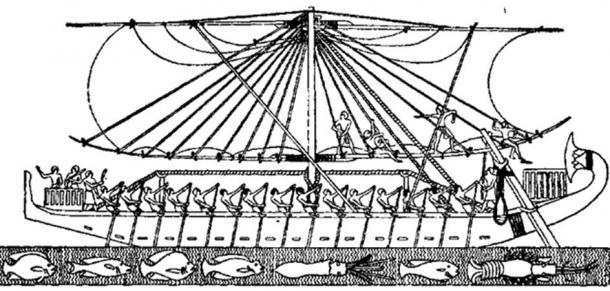
An image of Queen Hatshepsut’s sailing boat during an expedition to the Land of Punt on the Red Sea coast. ( Public Domain )
Based on the inscriptions from Hatshepsut’s reign, the five ships set out from a port on the Red Sea – probably Quseir, to journey southwards to Suakin, where the expedition disembarked with the ships that were hugging the shoreline. From Suakin, the route to Punt Land was overland through the Red Sea hills.
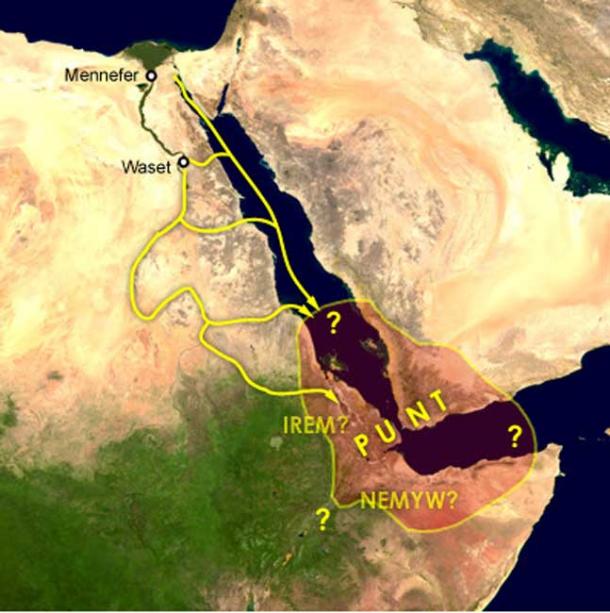
Map of a proposed location of Punt with trade routes from Egypt to Punt via rivers, wadis, and by sea. Mennefer is Memphis, Waset is Thebes and Irem and Nemyw are lands that supposedly border on Punt. ( Public Domain )
Trading with Punt Land
Inscriptions indicate relations between the two countries were very close and show the Puntites as an extremely generous people. The Land of Punt was routinely praised for its riches and the “goodness of the land” by many of the pharaohs’ scribes.
The expedition presented a fair exchange by both parties and the treasures offered by the Puntites were gold (even though the Egyptians had their own gold mines), wild animals, live apes, elephants, leopard skins, ivory, spices, precious woods, cosmetics, incense, aromatic gum, and frankincense and 31 incense trees ( Boswellia). This was the first time a plant species was successfully transplanted to another country. The transplant was so successful that the trees flourished in Egypt for centuries.
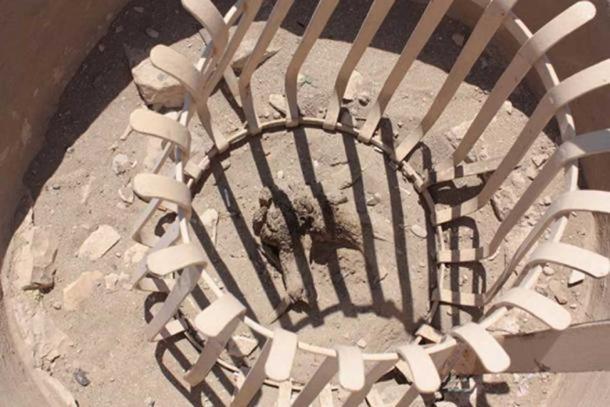
A tree in front of Hatshepsut’s temple, claimed to have been brought from Punt by Hatshepsut’s Expedition which is depicted on the Temple walls. ( CC BY-SA 3.0 )
The Puntite items were in return for the pharaoh’s weapons, jewelry, metals, and tools. The roots of the frankincense trees brought back from Punt by Hatshepsut’s expedition in 1493 BC can still be seen outside of her temple.
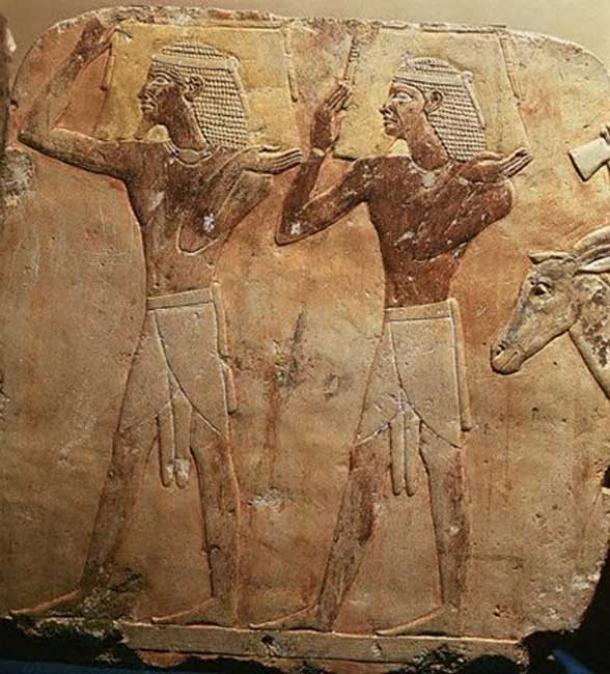
Puntite Workers carrying frankincense during Queen Hatshepsut’s Expedition. ( Somali Egyptian-Puntite History ) Somalis still wear this traditional costume of their Egyptian -Puntite ancestors. The white royal loincloth called “Gundhate” or “Gunti” (in both Somali and the Egyptian language) and the necklace called “Xirsi” or “Qardhaase.”
![]()
RELATED COMMENTS:
Comments
Aliya Osho, you mentioned all of those great accomplishments by the so call ancient Bulgaians in Africa, and what these pale people created over there, HOWEVER, you failed to mention what ancient BULGARIANS achived in Bulgaria which is a THIRD WORLD eastern European impoverished country on the brink of starvation, and are clueless about knowing how to survive on a daily food rationing of two sourdough rolls for pale white men, and one roll for women with a bowl of goulash? Why does all the paintings and drawings of ancient “Puntites” and Egyptians only show dark skin Black people and not any pale white “Scythian” paleo/Slavic people. Also, why is it that these so call first people on earth from Bulgaria did not build any Obelisks, Spinx’s, pyramids in Bulgaria? This is a serious subject matter about ancient Black Africans, and not a “Bulgarian Comedy” to entertain racist behavior.
Charles Bowles
______________________________________________________________
The paintings to not show all Egyptians to be black people, They are shown in varying shades of skin, primarily a coppery colour. Most women are show in a slightly complexion. When black people are show, you will know because the black people are painted…black.
some of the very early pharaohs can be seen with pale skin with red hair. Most kept their heads shaved and wore wigs…Nubian styles were popular. The Egyptians became a mixed race people probably early on. In pharaoh’s harem were hundreds of women the princesses from all of the vassal nation and from nations seeking alliances. Those women were of all races. The children produce, mixed race children were princes and princess of the palace. Please just read, extensively and try to let your personal preferences go and see what actually was.
__________________________________________
Actually, all of the ancient Egyptian pharaoh from the first to the twenty-fifth dynasty were 100% Black, and what I mean by Black, I am alluding to race, and not necessarily skin color since more than 95% of Black race people on earth have some type of brown or lighter skin. In regards to ancient Egyptians having red hair, it has been proven many times that the hair coloring is a result of an ancient dye which many present day Black “Upper Egyptians” still use to this very day. Even though this article mentions ancient Egyptians in terms of their relations to the ancient Black Puntites (present day Somalia), the primary emphasis is about the location of this great Black African nation, their importance in the ancient world, and how much their ancient Black Egyptian brothers and sisters admired them and compared them to “Living Gods”. It is mentioned further that the Black queen Hatshepsut honored “Hathor” of Punt as being her divine mother, and the Pharaohs of the 18th Dynasty believed that their culture originated in Punt. The ancient Egyptian book of the dead also reads that ancient Egyptians originated in East /Central Africa, and so it reads: “WE COME FROM WHERE THE NILE BEGIN, AND WHERE GOD HAPI DWELL, AT THE FOOTHILLS OF THE MOUNTAIN OF THE MOON”…..hunefer papyrus Black people who varies in many skin tones such as myself are indeed by race, even if we are painted yellow, reddish, brown, black, or “reddish/yellow” like myself…..However, again this article is the black people of ancient Punt, also known as “LAND OF THE GODS”, who many ancient Black Egyptians admired more than anyone on earth…
Charles Bowles
http://www.ancient-origins.net/ancient-places-africa/somalia-ancient-lost-kingdom-punt-finally-found-006893?page=0%2C1























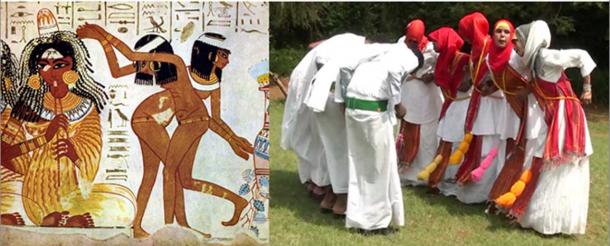





Ancient Egypt was formed by Ancient Bulgarians first human beings on earth. All the pharaohs names have a Bulgarian wording and meaning. So is the name of Egypt and Somalia. They all have in their naming the traces of the veneration of Mother Godess Ba / BaTa (today Ptah). Egypt for instance meand the earth Ga of Mother Bata. So is the old name of Somalia Bun. Bun / Ban means Belonging to Ba Godess. First inhabitants of Afrika were the Ancient Bulgarians – fair complex giants who built all the megalithic structures there and created the pharaoh system. Pharaoh ot BaRaOn means the Godly representative of Mother Godess Ba / BaRa as ra was the proper name of the Godess Mother Creator of the world. Ancient Bulgarian language was the first human language which was spoken all around the globe as people were one, spoke one language and had one spitiuality of Mother Godess Creator and her son the Sun God BalAz / HorAz. https://www.facebook.com/photo.php?fbid=890901887696102&set=pb.100003288…